PPC Video Campaign Targeting Methods You Shouldn’t Forget

YouTube campaigns have always made deeper targeting available to the advertisers. I loved video campaigns from the beginning because I could target by age, gender, parental status, household income, and more. But while those layered targets are great, it’s not enough for me. I’m greedy like the Little Mermaid.
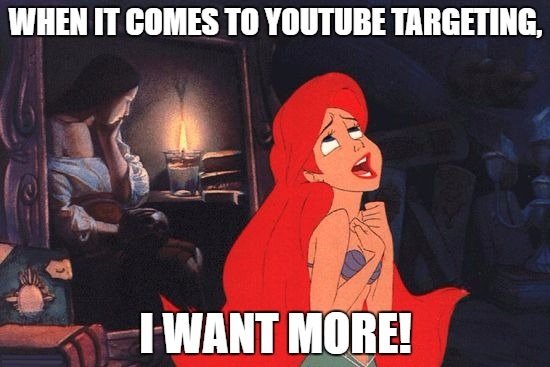
“I want to be where the people are.” Don’t laugh. She’s got the right idea. Just because you’re getting many impressions and views, doesn’t mean you’re connecting with the right audiences. The video campaign targets I’m going to show you aren’t new, but you don’t hear about them much. Let’s begin so you can use these targeting options on your current campaigns today!
Display Network Website Placements
A common misconception with YouTube ads is thinking they can only show up on YouTube. Not true at all. Many websites allow advertisers to place video ads on relevant websites.
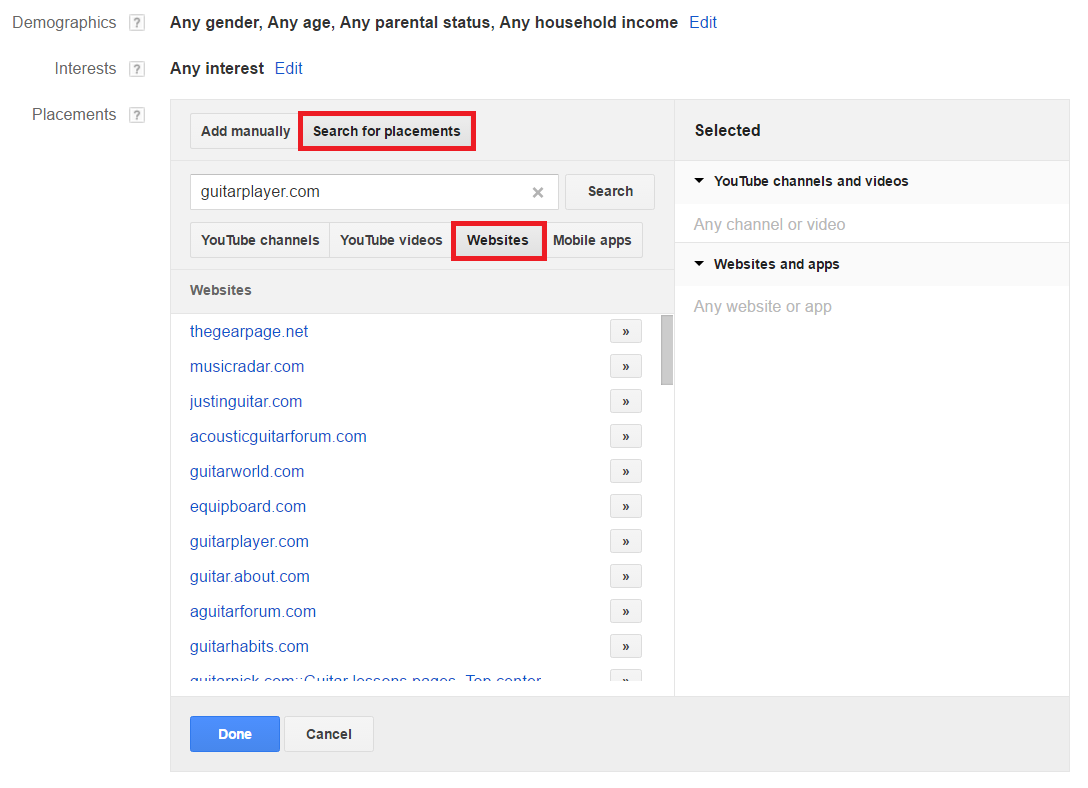
The image above showcases a variety of results, but don’t get fooled. Even though you’re setting up a new YouTube campaign, AdWords will still list every relevant site within their Display Network. Before adding any website placements, make sure to do some research first with Display Planner. You don’t want to add a bunch of website placements to your video targeting, see no impressions, then realize all of the placements you added don’t allow video ads.
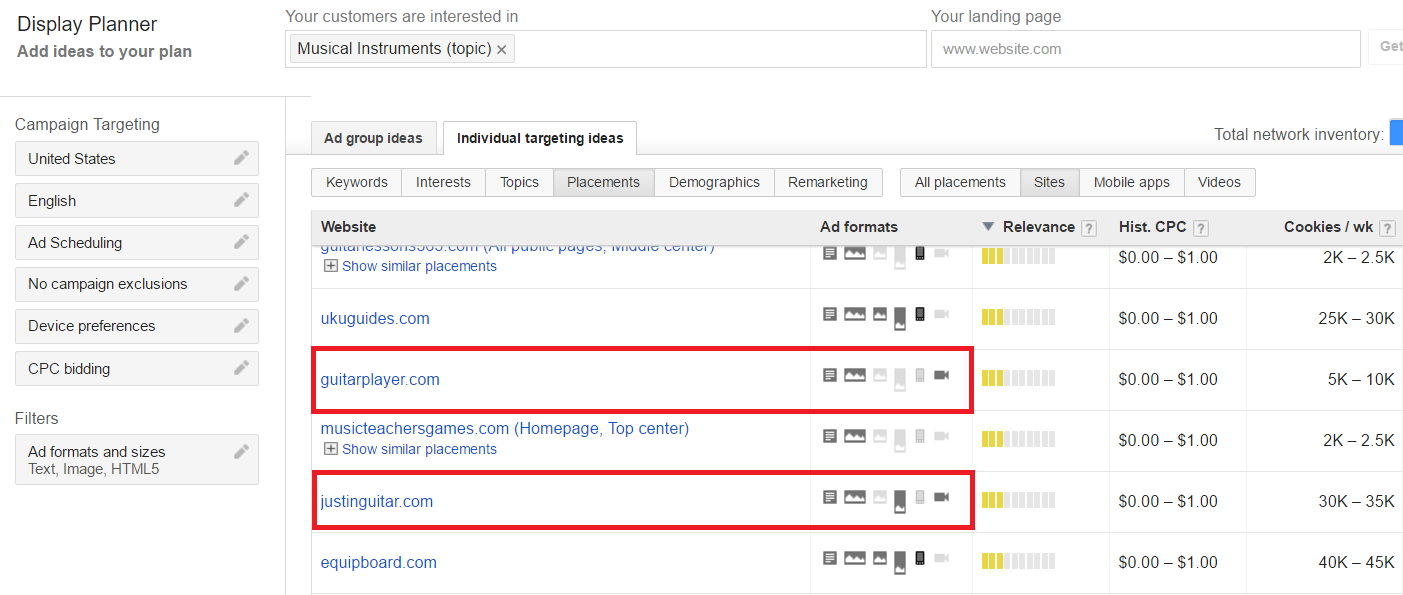
While impression share will vary for this ad targeting, I’ve personally found it to be one of the most effective. For my largest client running video campaigns, ad groups running purely on website placements have over 3,000% better view rate than any other video ad group targeting. For the same account, my direct placement ad groups for YouTube also have 121% more users watch the entire video. I can easily say this is becoming my favorite YouTube targeting method.
Custom Affinity Audiences
By default, AdWords already has a list of default affinity audiences advertisers can use for video targeting. These “TV-style” audiences offered to advertisers are pretty generic so pardon me for being blunt with this next statement. I’m not a fan of the basic affinity audiences. Why? They’re too broad for my taste. Even for the most basic brand awareness campaigns, I want some sort of relevance. Let me explain further. Let’s say my YouTube channel is dedicated to promoting tips on cooking great BBQ. If I wanted to test an affinity audience for my video ads, these are currently my only options…
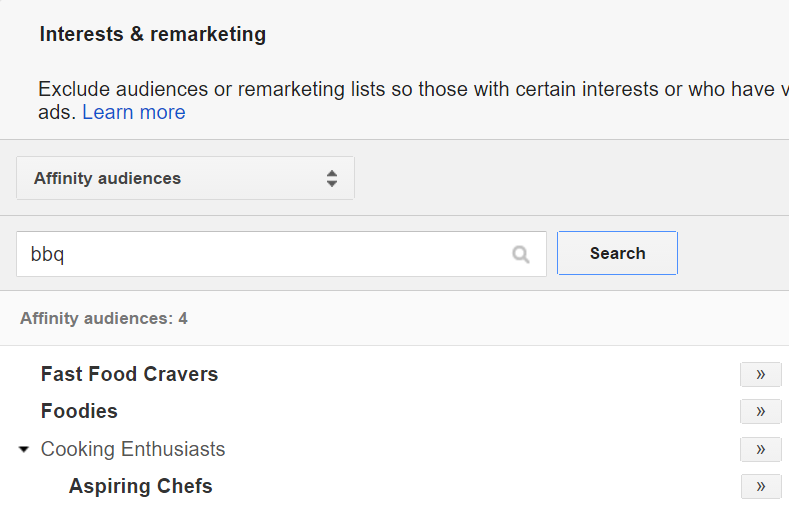
Yeah not ideal, right? For this exact reason, I recommend creating a custom affinity audience first. Even Google’s description of a custom affinity audience on their support page gives the perfect reason why custom affinity audiences are better.
With custom affinity audiences, advertisers can create audiences that are more tailored to their brands, compared to our broad, TV-like affinity audiences.
We all know how dangerous an unfiltered, broad match campaign can be. Unfiltered YouTube campaigns can be just as wasteful. And even though I’m using YouTube, for the most part, to expand upon my clients’ brand awareness, I still need my targeting to be relevant and strategic. Here is a custom affinity audience I might create for a BBQ YouTube channel.
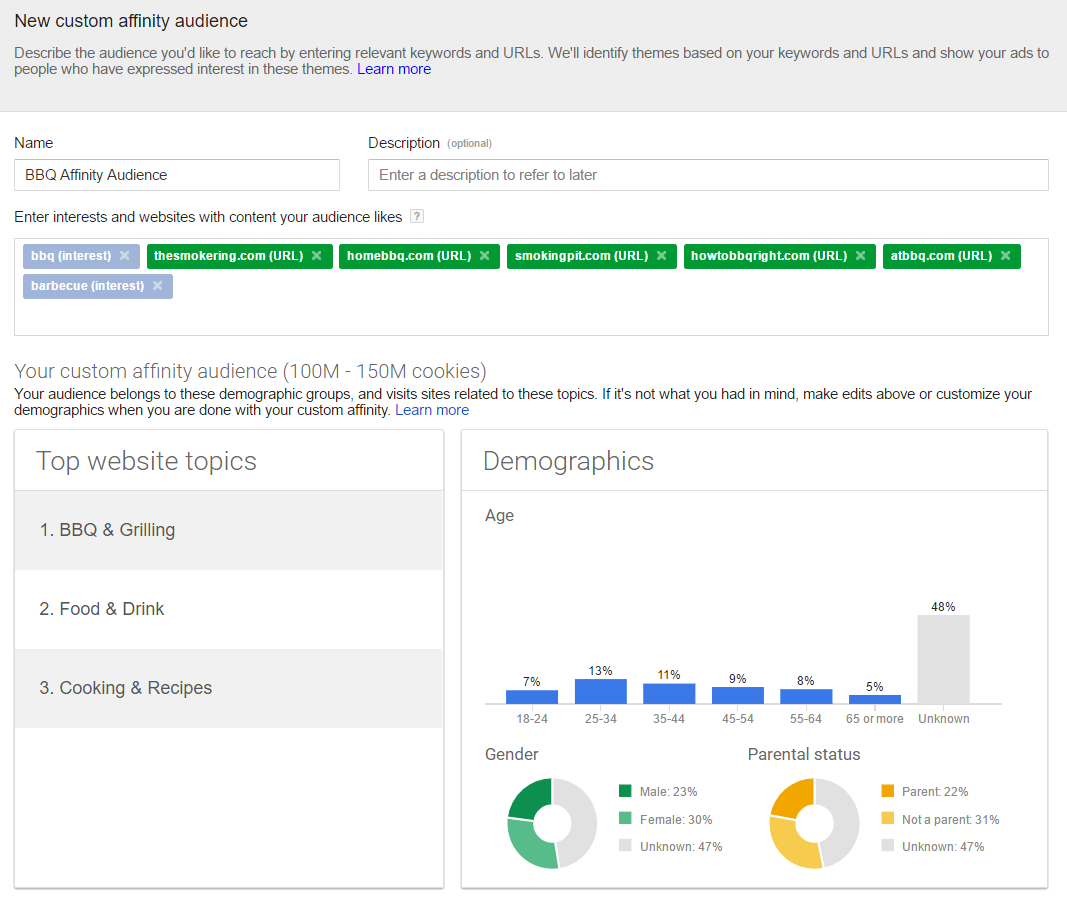
You can easily see how the new, custom affinity categories are going to be more relevant to the desired BBQ connoisseur over basic, affinity audiences. I can choose specific URLs and interests I feel are relatable to my audience. Last, consider testing a variety of targeting combinations with your custom affinity audience ad groups to see which sequences work the best.
Google Analytics Remarketing Audiences
Any remarketing audience you create in the AdWords Shared Library can be used for YouTube campaigns. If you want to take your YouTube remarketing to the next level, Google Analytics gives you another great option to find the right audiences for your videos. Under each property in your Google Analytics admin, you can create audiences in a crazy amount of combinations. If you want to create a remarketing audience as specific as “Females, ages 35-44, speak English, and have gone through 2 or more transactions from an iOS device,” you can create it. Or if you want to make sure your audience is large enough and create one of users who were on your site for five minutes or more, you can do that too.

Google Analytics gives video advertisers in AdWords the opportunity to create as many remarketing audiences as possible you wouldn’t find right away. They’re all custom to your website’s user behaviors. Do some exploring in the Audiences page in your Google Analytics. Get a better understanding of what type of remarketing audiences you can create. Then use the data from Analytics with the knowledge of your target audience to create new targeting options. Just make sure you’re not making the audiences too specific that you won’t get any impressions.
“Similar To” Remarketing Lists
Similar audiences are created by AdWords. They are collected by evaluating past user history on the Display Network, then grouping those users based on similar characteristics as your current audiences in the Shared Library. While “similar to” audiences aren’t anything new, it’s knowing when to use them that’s important. Don’t start a “similar to” campaign until you know who your target audience is and what targeting works the best. After you’ve found your ideal YouTube targeting, then shift the focus to expand your reach.
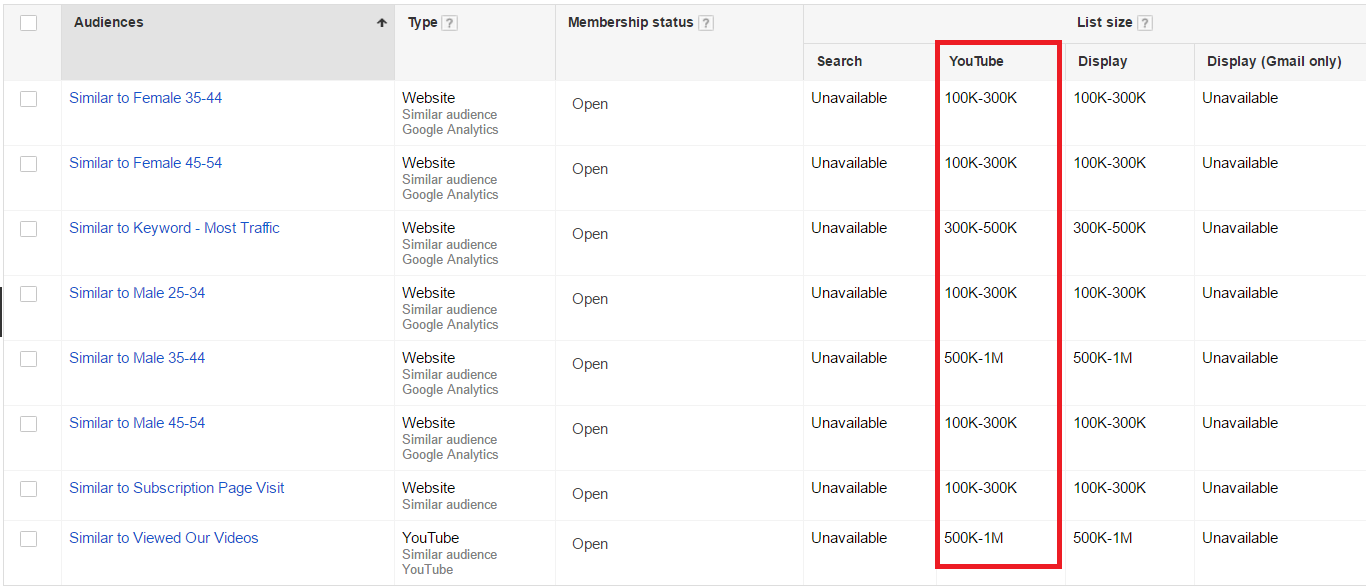
Similar audiences typically have pretty large list sizes. The larger audiences will help you expand your reach to a plethora of potential new users. But with using other targeting methods first, you can feel more comfortable using similar audiences after you have figured out your bread and butter YouTube targets.
Final Point
Don’t settle for what you initially see in the YouTube interface. Keep exploring new options, like the ones mentioned above. As you keep testing, you’ll find which audience engages with your videos the most. And once your best audiences are defined, you have the data to create new video content just for those user groups. Hope to see you all at HeroConf, but if you can’t make it feel free to reach out to me at @MilwaukeePPC with any questions.



